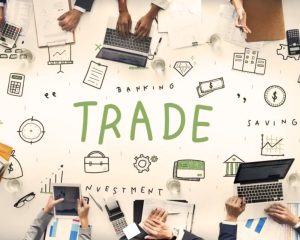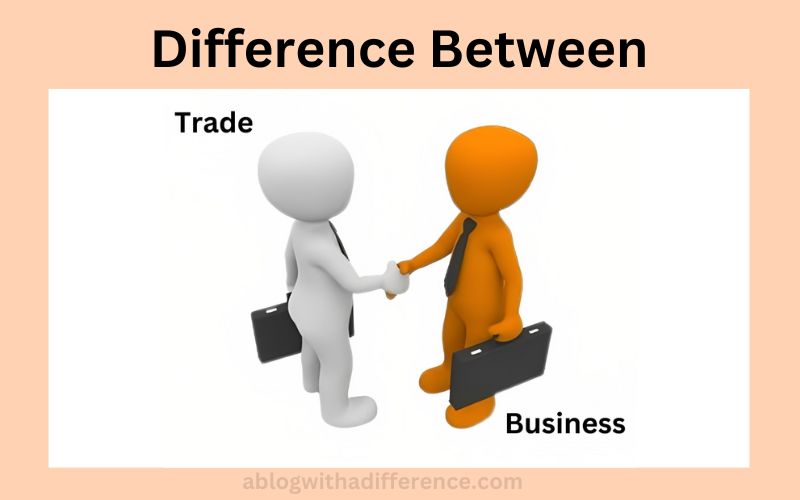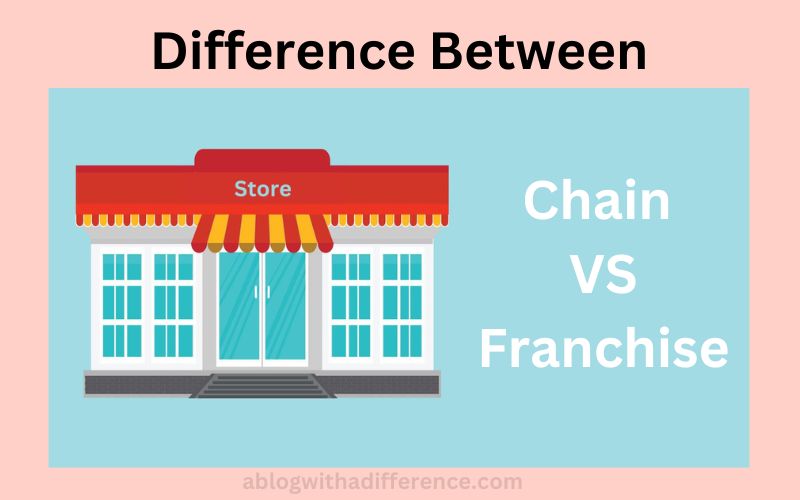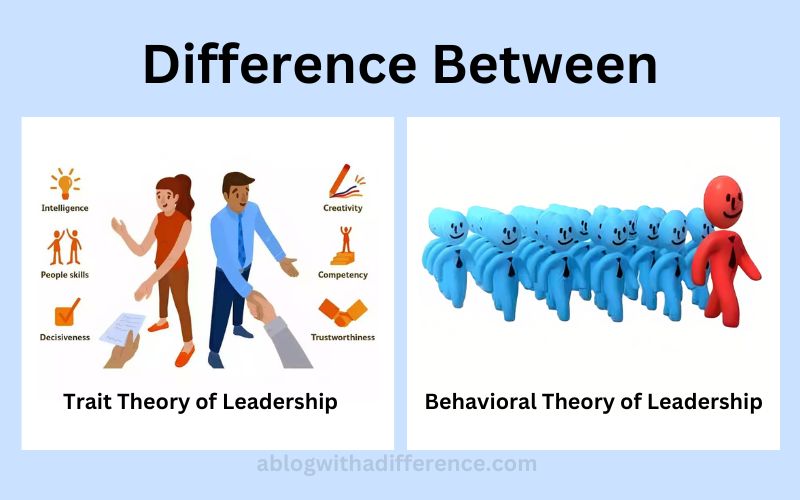Difference Between Trade and Business
A brief introduction to Trade and Business
Trade and Business differ primarily because trade involves purchasing and selling goods while business encompasses all the activities undertaken by an entity acting as a business, such as selling/buying/marketing/advertising, etc.
Trade and Business generally refer to any activity performed by an Individual or group to generate income by selling products or providing services for a fee. As shown above, trade is the business process while “business” refers to all activities undertaken by an organization.
Importance of understanding the difference
Understanding the difference between trade and business is crucial for several reasons:
1. Clarity in Terminology: Understanding Trade and Business Language When using trade and business terms interchangeably, confusion often results. Educating yourself about their differences helps ensure efficient communication and prevent misinterpretations of messages.
2. Career and Entrepreneurship Choices: Career and Entrepreneurship Decisions Understanding the difference can help individuals make informed choices regarding their professional paths or entrepreneurial ventures. They have options such as trading – which entails buying and selling services or goods – or more general business operations like marketing, production, and distribution.
3. Strategic Decision-Making: Understanding the differences between Trade and Business enables business owners and entrepreneurs to make smart decisions that align with their goals. For instance, they could choose either to focus exclusively on trade-related businesses or expand into additional fields.
4. Compliance With Legal and Regulatory: Laws Trade and Business sectors are subject to numerous regulations and legal frameworks, which is why understanding them and adhering to them are so essential to successful operations. Recognizing this allows individuals and businesses to understand and adhere to any specific laws, regulations, or customs rules applicable to their activities.
5. Evaluate and Manage Risk: Trade and Business involve various levels of risk. By understanding this difference between them, individuals can accurately identify those related to their chosen path as well as devise suitable plans to control it.
6. Growth and Development in Business: Expanding our understanding of what makes up a successful business goes beyond trade, providing insight into finance, marketing, operations, and human resources as well as supporting its development, expansion, or long-term growth. This can aid the process in which new ventures take shape as well as create long-term success stories for those involved.
7. Partnerships and Collaboration: Gaining an in-depth knowledge of Trade and Business differences is vital in creating effective partnerships and collaborations, and individuals can quickly identify potential partners whose skills match up well with their needs and goals.
8. Economic Perspective: Understanding the distinction between Trade and Business can lead to a deeper insight into global economies and markets, helping individuals see how interrelated activities in business operations affect trade operations as a whole, and giving a comprehensive picture of global economies.
Understanding the distinctions between Trade and Business are integral in making informed career choices, meeting legal compliance obligations, gaining more comprehensive economic understandings, and efficiently managing one’s career path. With this knowledge comes the ability to navigate your path effectively.
What is Trade?
Trade is a fundamental economic concept involving the purchasing and selling of goods and services between parties; either through direct transactions between buyers and sellers or as compensation that individual buyers provide to sellers.
The economy often depends on trade between manufacturers and consumers. Trade involves using cash as the medium for exchange. When services and goods are exchanged for other items without cash exchange being necessary we refer to it as a barter type of trade.

There are two general forms of trade – domestic (internal) commerce and international commerce. Internal commerce refers to trade within one nation’s borders – typically wholesale and retail trade – while international commerce allows countries to trade products and services, and expand markets.
International trade fosters markets that are both competitive and diverse. As globalization evolves, so too does international trade – individuals are now able to purchase just about anything on the market! If it is unavailable locally or even regionally, they can purchase it internationally or online.
Indian consumers now have their choice between Japanese, German, or Indian automobiles due to global trade’s increased competition resulting in reduced costs, which means cheaper goods for customers.
Export and import are both critical terms in trading. When products are sent abroad for sale or purchased on an open market to then be imported later on, that constitutes export while when items are purchased domestically then imported is considered import.
Trade isn’t limited to products; it also encompasses services. Banks, tourism consultants, transportation firms, and transportation are among many examples of service trading.
What is Business?
A business can be broadly defined as any organization or enterprising entity engaged in commercial, industrial, or professional activities for profit or not-for-profit activities with charitable giving as its core purpose or promoting social justice initiatives as its goals.
Business encompasses individuals or organizations who manufacture and sell products or services for profit. Furthermore, the term can refer to both sole Proprietorships as well as International Corporations.
Every business needs a plan. A business plan can be described as a document that details the goals and objectives of a company along with Strategies designed to reach those targets. Business plans play a critical role in borrowing capital to begin operations.

The legal structures of companies are one of the cornerstones of their operations, ranging from permits and registration requirements to obtaining licenses to legally operate.
Companies in many countries are considered legal persons, meaning that they can own property, enter contracts for loans, and be sued just like people can.
Differences Between Trade and Business
There are several key differences between trade and business:
1. Scope: Trade differs significantly from business in its scope, focusing on commodity trading between people. By contrast, business encompasses more activities including production marketing finance, and operations management.
2. Objectives: Business and trade have different goals; trade seeks to make exchanging products and services between parties easier while businesses seek to maximize profit while fulfilling customers’ needs through various operations.
3. Participation: Trade typically involves entities and individuals involved in the purchase and sale of items and services for trade. This could involve retail trade, wholesale trade, import/export trade, and more. Trade can also encompass partnerships, individuals or corporations as well as other legal entities that engage in activities outside trade such as manufacturing, providing services, or innovating products or processes.
4. Scale: Trade can take place on various scales, from local trade conducted at an individual level to international commerce on an international level. Businesses also vary widely in size ranging from small firms that operate locally up to multinational enterprises with branches throughout several countries.
5. Focus: Trade is the sale and distribution of goods and services between producers and intermediaries/consumers; business focuses more on the administration/operation of various operations (production finance/marketing/human resource). Both endeavors aim to meet specific objectives.
6. Risk: Businesses and trade are both exposed to certain risks. Traders typically face market fluctuations such as demand/supply imbalances; business risks on the other hand include competitive markets, financial management operational issues compliance with regulatory/legal requirements as well as any specific risks facing businesses.
7. Legal Considerations: Trade may need to abide by specific laws and regulations related to trade and customs procedures, including customs tariffs, quotas, agreements, and trade tariffs. Business requires compliance with an array of legal requirements including employment laws, corporate law as well as intellectual property rights protections as well as taxation rules about its industry or region.
Understanding these distinctions is important for businesses and individuals since it enables them to select strategies for regulatory compliance and risk control as well as make informed decisions regarding trading or conducting business generally.
It also assists individuals in making knowledgeable choices regarding career or entrepreneurial endeavors while supporting general business expansion.
Examples and Real-World Scenarios
To provide a better understanding of the differences between trade and business.
Let’s explore examples of real-world scenarios for each:
Example of Trade:
1. A local farmer sells fresh produce to a nearby grocery store.
2. An individual purchases handcrafted products from an artist at their local marketplace.
3. An international business exports vehicles manufactured in one country to another country for sale there.
4. An importer purchases digital devices manufactured by a company based in a different nation.
5. Retailers who deal in clothing often source large amounts from wholesalers to stock their stores with goods for sale.
6. A coffee shop owner purchases coffee beans from a fair trade cooperative located within one of the top coffee-producing nations.
Examples of Business:
1. An innovative tech startup develops and markets an app for mobile phones which it sells around the globe.
2. A manufacturing firm produces and sells vehicles through a dealer network to its customers.
3. A restaurant chain operates multiple locations to offer meals and dining experiences to its patrons.
4. Consulting firms provide services tailored specifically to assist companies with creating strategies and improving operations.
5. Retail companies operate both online stores and physical shops selling various consumer products.
6. A construction company is an enterprise that undertakes projects related to the building of both commercial and residential structures.
These examples demonstrate how trade-oriented scenarios focus on purchasing and selling of products or services while business scenarios include more diverse activities, including manufacturing, marketing, operations management, and strategic decision-making.
Understanding these examples can provide clarity about all of the aspects and complexities involved with business and trade operations.
Comparison Chart of Trade and Business
Here’s a chart of comparison that highlights the main differences between business and trade:
| Category | Trade | Business |
|---|---|---|
| Scope | The focus is on selling and buying items or services | Covers a broad spectrum of services that go beyond trade, including marketing, production and finance, as well as operations management. |
| Objectives | Facilitate exchange and benefit to each other | Maximize profits, meet customer needs, create value |
| Participation | Organizations and individuals involved in purchasing and selling | Corporates, partnerships, or individuals or legal entities that are engaged in diverse business activities |
| Scale | The process can be performed at different levels, from the local to the international | The scale of the business varies from small-scale businesses to large multinational corporations |
| Focus | The focus is on the trading and distribution of goods and services | A broad overview of managing various tasks including marketing, production operations, finance, and production |
| Legal Questions | Respect of trade laws, regulations for import/export | Compliance with a broader range of legal requirements such as employment laws, corporate law and taxation laws, as well as specific regulations for industries |
| Risk | The risks associated with market volatility Supply, demand, and | Market competition and operational and financial challenges Legal compliance, and other specific risks to businesses |
| Examples | Trade in retail, wholesale import/export trade | Service provision, manufacturing Innovation and financial trade |
| Relationship | Trade is a part of the business process | Trade is a major contributor to revenue generation as well as supply chain management. market expansion and overall growth of business |
Relationship Between Trade and Business
Trade and Business share an intricate relationship; trade is an integral element of business activities such as the production, distribution, and sale of products or services between different parties.
While trade refers to exchanging of physical commodities between parties directly involved with it, businesses encompass many other activities involving producing, distributing, and selling their goods or services directly or through third-party suppliers.
Here are the key points that illustrate the relationship between business and trade:
1. Trade as Part of Business: Trade is an essential aspect of doing business. Companies utilize trade to acquire raw materials, components, or finished goods necessary for manufacturing processes as well as market their goods or services to clients or other companies.
2. Revenue Generation: Trade activities can play an invaluable role in driving revenue generation for companies. Through commerce, sales revenues can be generated via goods and services exchange. Furthermore, trade activities directly affect the financial performance and profitability of any given firm.
3. Supply Chain Management: Trade activities are key in managing a company’s supply chain for businesses, providing vital components, materials, and finished goods from suppliers to support manufacturing and distribution processes. Building solid trade relations and partnerships among suppliers ensures an uninterrupted supply chain process.
4. Expanding Markets: Trading allows companies to expand their reach beyond domestic or local boundaries. Through trade, businesses can broaden their client base while exploring international opportunities that can increase market share and growth for them.
5. International Business and Trade: Global commerce depends heavily on international commerce for purchasing products or services from other countries or exporting their own to international markets. International commerce plays an integral part in economic integration between Nations through the exchange of products and services between them.
6. Business Growth: Engaging in trade activities can play an instrumental role in business development and expansion. By trading companies can diversify their offerings gain entry to new markets form strategic alliances with other Organizations, expand their reach and broaden the scope of their company.
7. Economic Effect: Business and trade have an enormous effect on our economic system. Trade activities contribute significantly to job creation, economic expansion, and product exchange while businesses in turn contribute via investments, employment opportunities, innovation, and value creation – the interdependency between these activities is integral for sustaining our economy’s health.
Trade and Business enjoy a strong mutually-beneficial relationship. Trading forms an essential element of operations for many businesses, contributing to revenue generation as well as supply chain management, expanding markets, international business operations, and the overall economic impact.
Trade is a cornerstone of success for businesses enabling them to access resources reach customers, and expand their Operations. Understanding and harnessing its relationship is essential to its growth and expansion on an international platform.
Conclusion
Understanding the differences between Trade and Business are integral to successful entrepreneurs, individuals and organizations alike. Trade encompasses the exchange of commodities and services while business encompasses a wider array of activities like marketing, production finance and operations management. Being aware of these distinctions can bring many advantages. Primarily, it aids communication by guaranteeing precise usage of terms like commercial and business and preventing confusion.


